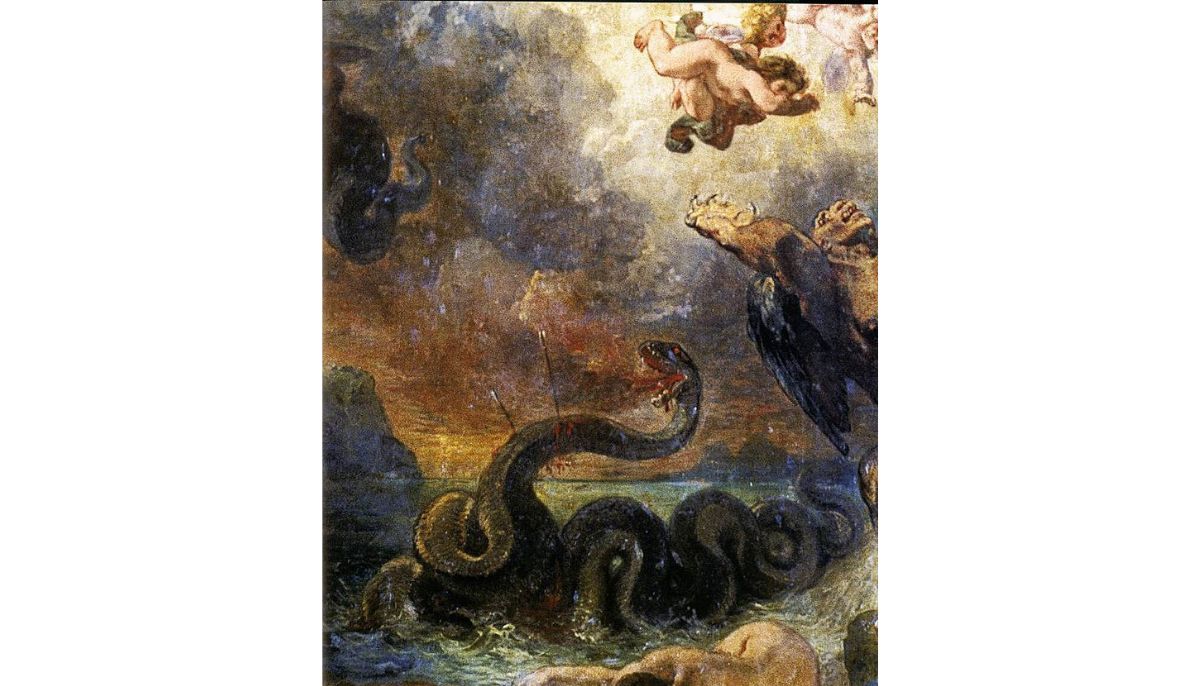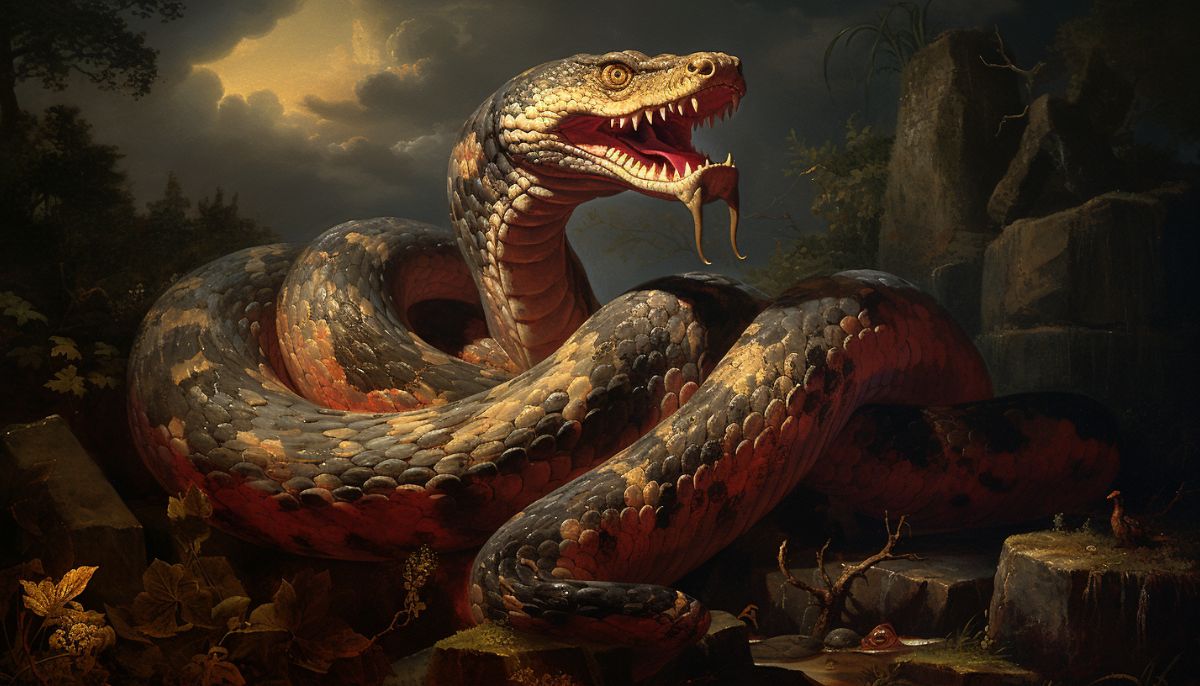In the annals of Greek mythology, Python emerges as a formidable creature, a monstrous dragon-serpent sent forth by Gaia, the Earth, to safeguard the sacred oracle of Delphoi (Delphi).
Born from the remnants of the Great Deluge, Python’s presence loomed large, its malevolent influence spreading across the land. This article delves into the enigmatic Python, exploring its appearance, Delphi’s significance, and its pivotal role in classical sources.
What does Python look like in Greek Mythology?

The subject, which Delacroix took from Ovid’s Metamorphoses, is effectively the victory of Good over Evil. But it takes the form of beauty vanquishing the ugly and genius dispelling stupidity.
Python, the monstrous guardian of Delphi, is shrouded in descriptions that evoke awe and trepidation. It is depicted as a formidable serpent, a creature of legendary proportions in Greek mythology. This portrayal aligns Python with other renowned Greek monsters, such as the Drakaina, which share a similar blend of serpentine and draconic features.
The imagery of Python, with its sinuous form and fearsome countenance, resonates with other iconic creatures in Greek lore. Its formidable presence aligns it with the likes of Echidna, a half-woman, half-serpent drakaina, and the legendary Typhoeus, with whom Echidna consorted.
This imagery underscores Python’s status as a creature of immense power and significance, solidifying its place among the pantheon of ancient Greek monsters.
Python Mythology
In Greek mythology, Python’s tales are woven with threads of both awe and trepidation, reflecting the creature’s formidable presence in ancient lore.
Homeric interpretation
The Homeric Hymn to Apollo, believed to have emerged from the archaic to the Classical era, unveils a vivid account of Apollo’s encounter with the serpent.
Python is described as a Drakaina, a deadly serpent, guarding Delphi in this version. Apollo’s quest for a sacred site leads him to Delphi, where Python’s menacing presence poses a significant challenge.
As narrated in the hymn, Apollo’s resolute act of slaying Python establishes his dominion over the revered Oracular shrine.
Hyginus’s Python
Hyginus, in his rendition, introduces a different layer to Python’s origin and purpose. According to this account, the jealousy of Hera, sparked by Zeus’s union with Leto, instigates the dispatching of Python in the relentless pursuit of the expectant goddess.
With the unborn Artemis and Apollo, Leto finds herself relentlessly pursued across vast stretches of land. Apollo, merely four days old, confronts this relentless adversary, embarking on a resolute journey to Mount Parnassus, Python’s abode.
The pursuit culminates at the sacred precinct of Gaia in Delphi. In a daring act, Apollo breaches the sanctified space and brings down Python with a barrage of arrows, the serpent’s lifeblood staining the rock cleft upon which the priestess perched on her tripod.
This juxtaposition of accounts highlights subtle differences in Python’s characterization. In the Homeric Hymn, Python is identified as a drakaina, while Hyginus portrays Python as a relentless pursuer dispatched by Hera.
Despite these distinctions, both narratives converge on the pivotal moment of Apollo’s confrontation and Python’s ultimate demise, marking a turning point in the sanctuary’s history.
Python’s stories resonate with the broader tapestry of Greek mythology, where formidable creatures and divine conflicts shape the destinies of gods and mortals.
Similar Monsters in Greek mythology to Python
While Python holds a unique place in Greek mythology, it is worth noting that other serpent and dragon-like creatures share similar attributes.
One such formidable figure is Ladon, the hundred-headed dragon tasked with guarding the golden apples in the Garden of the Hesperides.
Another is the Lernaean Hydra, a multi-headed serpent slain by Hercules as one of his twelve labors.
These creatures, like Python, exemplify the ancient Greeks’ fascination with the formidable and the fantastical, weaving them into the rich tapestry of their mythological narratives.
Want to know more about the creatures and monsters of Greek Mythology?

Explore more articles like this in our broader series on Greek monsters. To delve even deeper into the world of mythical creatures, be sure to check out our comprehensive hub article on the monsters of Greek mythology.






